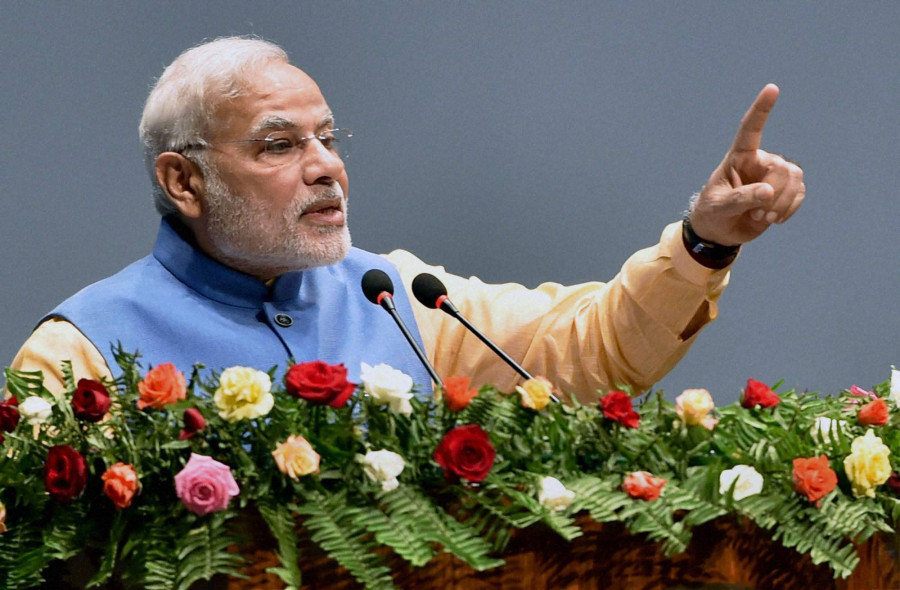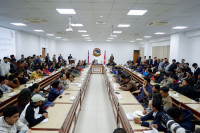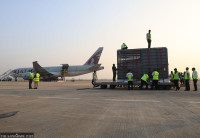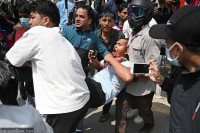National
Modi takes the lead on fighting Covid-19 in the region but there are geopolitical considerations
The Indian prime minister’s initiative to bring South Asia together bodes well for SAARC but there is a geopolitical element that cannot be ignored, say experts.
Anil Giri
Earlier this week, Indian Prime Minister Narendra Modi proposed to bring together SAARC nations to chalk out a collective strategy to fight the Covid-19 pandemic.
Prime Minister KP Sharma Oli quickly seconded the proposal, as did a number of other leaders from South Asia.
On Sunday, all member states got together for a video conference, sharing their views on the global pandemic, their preparedness and ways to collectively tackle the disease. During the video conference, Modi proposed the establishment of a Covid-19 emergency fund with voluntary contributions from member states to fight the pandemic. India offered $10 million, saying any member state could avail of the funds.
Modi’s proposal came as a surprise to many, as New Delhi in recent years has largely put the South Asian Association for Regional Cooperation, a grouping of eight nations in South Asia, on the backburner. By taking the lead and calling on member states to make a collective effort, the Indian prime minister has not only brought SAARC back into the conversation but has also managed to assert that he is the leader of the region.
Dinesh Bhattarai, a former Permanent Representative to the United Nations in Geneva, said that Modi’s actions should be seen in the larger geopolitical context.
“Geopolitical shifts are taking place in South Asia and the interests of major powers are rising,” Bhattarai told the Post. “The peace deal between the United States and the Taliban, and relations between Afghanistan and Pakistan make for a complex geopolitical situation. The interests of China and Russia cannot be ignored either.”
With China increasingly making inroads into a number of South Asian countries, primarily Sri Lanka, Pakistan, the Maldives and Nepal, foreign policy experts say there’s more to Modi’s move than meets the eye.
“We don’t know the details of the blueprint but geopolitical factors are certainly the driving force behind Modi taking the lead,” said Bhattarai.
The video conference also made good optics for Modi, who has recently been embroiled in a number of domestic and neighbourhood skirmishes. Modi and India’s image have taken a beating in the international press regarding the Indian government’s brutal suppression of student-led protests.
But Modi’s initiative, and the enthusiastic response of most other members, bodes well for SAARC, which has lately been moribund, largely because of the rivalry between India and Pakistan. After New Delhi decided to pull out of the 19th SAARC summit, scheduled for November 2016 in Islamabad, there have been no substantial efforts to give impetus to the regional bloc.
After his election for a second term as prime minister, Modi chose to invite leaders from BIMSTEC, unlike in 2014 when he had taken the oath of office in the presence of SAARC leaders. India’s focus has largely been sub-regional groupings like BIMSTEC (The Bay of Bengal Initiative for Multi-Sectoral Technical and Economic Cooperation) and BBIN (Bangladesh, Bhutan, India and Nepal), both of which are without Pakistan.
“But the way Modi took the lead has reinforced SAARC’s relevance and the importance of integration among member states,” said Sridhar Khatri, executive director of the South Asia Centre for Policy Studies. “His initiative is a departure from the Bharatiya Janata Party government’s position on SAARC.”
According to Khatri, the Hindu-nationalist Bharatiya Janata Party, ever since Atal Biharai Vajpayee’s prime ministership, has largely tried to paralyse SAARC to isolate Pakistan.
“If this move by Modi is going to take shape, it will be a reversal of Indian policy towards SAARC,” he said.
While Modi’s initiative might reflect a change of policy towards SAARC, it largely cements his role as de-facto leader of the region, as prime minister of the region’s largest country and biggest economy. Nepal, which currently holds the position of SAARC chair, could’ve called a similar meeting, but has now ceded that role to India and Modi.
Rajan Bhattarai, Oli’s foreign relations advisor, said that as of now, member states have at least re-established communications.
“The move has rekindled the hope of the revival of SAARC and gradually it will open other vistas too,” Bhattarai told the Post. “We need regional integration and interdependence and we have to boost trade, commerce and regional projects. So we need SAARC.”
As far as the collective fight against the Covid-19 pandemic is concerned, there are concerns over the implementation of Modi’s ambitious plan, given the history of SAARC and its poor execution.
“To combat the virus, we need robust, dedicated and technically sound institutions to link with each other,” said Khatri. “Do we have enough technical manpower to execute the regional plan? Do we have mechanisms to implement the decisions taken collectively by the member states? In this time of seriousness, we have to move beyond optics, symbols and gestures.”
The Covid-19 pandemic has not affected South Asia to the extent that it has China or Europe, but there are fears that the spread of the disease in a densely populated region like South Asia, combined with its poor public health infrastructure, could spell disaster.
So far in the region, India has reported the highest number of Covid-19 cases with 112 infections and two deaths.




 13.12°C Kathmandu
13.12°C Kathmandu















